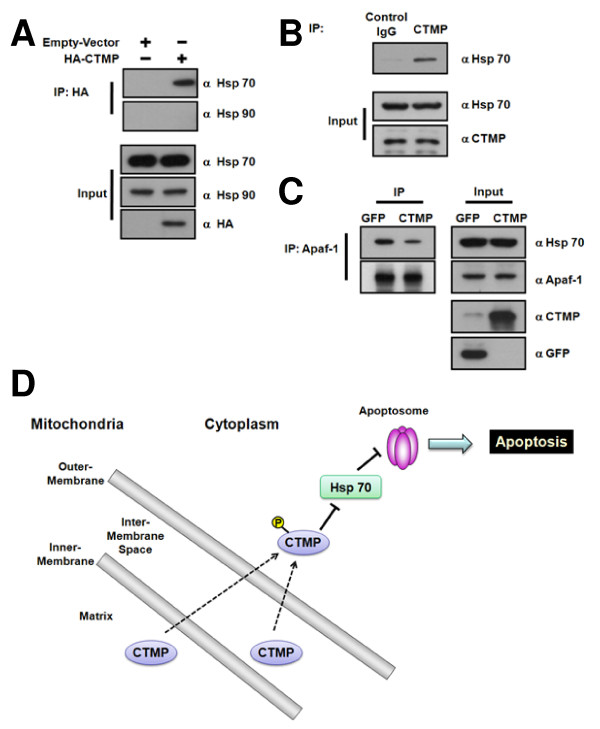Figure 4.
Binding of CTMP to Hsp70 inhibits the formation of a complex containing Hsp70 and Apaf-1 in HeLa cells. (A) HeLa cells were transiently transfected with HA-CTMP and cultured for 24 h. Bound proteins in HA-CTMP immunoprecipitates were detected using anti-Hsp70 and anti-Hsp90 antibodies (top two panels). (B) HeLa cell extracts were incubated with anti-CTMP antibody and bound Hsp70 was assessed by immunoblotting (top panel). (C) HeLa cells were infected with GFP- and CTMP-adenovirus for 24 h. After immunoprecipitation of Apaf-1, bound Hsp70 was detected (top panel). Input of each protein was also detected (bottom). Similar results were obtained in three separate experiments. (D) In addition to CTMP's role in PKB inhibition, CTMP has a key role in mitochondria-mediated apoptosis by localizing to mitochondria. CTMP appeared to be phosphorylated on Ser37/Ser38 in response to pervanadate stimulation, resulting in the cytosolic localization of CTMP. In this context, CTMP sensitizes the cell to apoptosis by binding to Hsp70, thus preventing its binding to Apaf-1. Therefore, CTMP may have distinct roles in various subcellular compartments.

